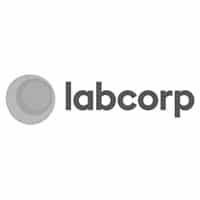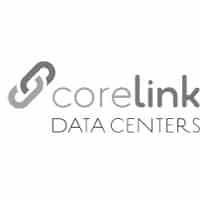 If there is one thing that all data centers must prioritize, constantly evaluate, frequently adjust, and dedicate a lot of resources to, it is cooling. Data center cooling is a major priority because it is necessary to keep all equipment running smoothly and safe but it is also a major drain on resources so employing data center cooling best practices and implementing eco-friendly, energy efficient cooling mechanisms is incredibly important.
If there is one thing that all data centers must prioritize, constantly evaluate, frequently adjust, and dedicate a lot of resources to, it is cooling. Data center cooling is a major priority because it is necessary to keep all equipment running smoothly and safe but it is also a major drain on resources so employing data center cooling best practices and implementing eco-friendly, energy efficient cooling mechanisms is incredibly important.
There is perpetually a heavy burden placed on any data center’s cooling system and that burden grows and changes as there are load changes, as is the case with most data centers. Data is not getting smaller, cooling needs are generally only increasing. But, data centers must evaluate what the cooling needs are, and what the warmest operating temperature can be to still operate efficiently and effectively while protecting data. Additionally, many legacy data centers do not have the most energy efficient cooling systems in place and so data centers must evaluate if new cooling methods need to be implemented.
How Much of a Data Center’s Resources Are Dedicated to Cooling Costs?
 It is no secret that data centers use a lot of energy. In fact, it is not an exaggeration to say that the amount of energy used by some data centers is more than some small countries. Allocating an appropriate amount of resources to cooling is important, but it is also important to use that as a guide when trying to reduce cooling costs without sacrificing any data center functionality, efficiency, or safety. Data Center Knowledge elaborates on the challenge of cooling data centers in an industry that is constantly evolving and just how much resources cooling tends to take up, “The cooling process accounts for 40 percent of all power consumed by data centers, so this question is a top priority for operators. Ensuring optimal cooling in a data center not only lowers operational expenditure, but it reduces the strain on equipment cooling mechanisms, extending the lifespan of the hardware; and freeing up power for IT equipment, increasing equipment uptime. The decision to invest in cooling infrastructure is easy, however, choosing the method with which you regulate temperature within the data center can be more challenging.”
It is no secret that data centers use a lot of energy. In fact, it is not an exaggeration to say that the amount of energy used by some data centers is more than some small countries. Allocating an appropriate amount of resources to cooling is important, but it is also important to use that as a guide when trying to reduce cooling costs without sacrificing any data center functionality, efficiency, or safety. Data Center Knowledge elaborates on the challenge of cooling data centers in an industry that is constantly evolving and just how much resources cooling tends to take up, “The cooling process accounts for 40 percent of all power consumed by data centers, so this question is a top priority for operators. Ensuring optimal cooling in a data center not only lowers operational expenditure, but it reduces the strain on equipment cooling mechanisms, extending the lifespan of the hardware; and freeing up power for IT equipment, increasing equipment uptime. The decision to invest in cooling infrastructure is easy, however, choosing the method with which you regulate temperature within the data center can be more challenging.”
What Temperature is Ideal for a Data Center?
This is a challenging question to address because no two data centers are the same. This answer to this question will be influenced by the location of the data center and the surrounding climate, the size of the data center, the equipment within the data center, the redundancy measures the data center has implemented, what amount of the data and equipment in the data center is considered mission critical, etc. Power Admin further explores the delicate balancing act that is choosing a temperature to maintain for a data center, “The American Society of Heating, Refrigeration and Air-conditioning Engineers (ASHRAE) created a data center classification system in 2011, with a range of recommended operating temperatures, to match. For general purposes, this stands at 81 F (27 C), but maximum allowable temperatures can reach 113 F (45 C). Note that this is actually the temperature at which increased equipment failure rates may occur – so it’s in your best interests to maintain ambient temperatures well below this level. Deciding on your optimum level is a bit of a balancing act. On the one hand, a data center which is held at a somewhat higher temperature will require less cooling (and therefore less energy consumption and cooling equipment). On the other, running your hardware at a higher temperature runs the risk of glitches and outright failures.”
What Data Center Cooling Methods Are Available and Are They Sustainable?
 Data center cooling methods and strategies obviously involve more than cooling specifically – it means the removal of hot air as well. But there are many options when it comes to the specific ways you can remove air and cool rooms in a data center. First, it is important to note that if you are considering ways to update your data center’s cooling methods it is ideal to consider what eco-friendly, energy efficient cooling methods are available. Many data centers are taking advantage of their surrounding environments to help cool their data center in a more sustainable way that also saves money on the costs of cooling in the long run. If choosing data center location is an option, or if the data center is already located in a relatively cool or cold environment, utilizing the natural resource of cold air to cool a data center is a great option. Additionally, liquid cooling has become very popular, with major corporations and industry leaders adopting liquid cooling in their data centers. Natural Cycle Energy makes note of some leaders in eco-friendly, sustainable data center cooling, “Mark Zuckerberg knows something about having to manage massive server data centers as the owner of both Facebook and Instagram. In 2013, Facebook launched the Lulea server center that is cooled naturally by the Nordic air, coming from the Arctic Circle, and whatever residual heat is left over is used to heat the office above…Apple is a corporation that has shown its commitment to sustainable energy. When the Maiden, North Carolina data center was under construction, some were unsure if the facility would be able to be 100% powered by green technology. They did it. Not only does the whole facility run on sustainable, eco-friendly power sources but much of its data center cooling is achieved with free-outside air, allowing the chillers to be turned off 75% of the time…Google has practically become synonymous with innovation and their Hamina, Finland location is no exception. Built from an old paper mill, they pull seawater from the Gulf of Finland to run through the server’s heat exchanges and then remix the warm water with cold before returning it to the Gulf.”
Data center cooling methods and strategies obviously involve more than cooling specifically – it means the removal of hot air as well. But there are many options when it comes to the specific ways you can remove air and cool rooms in a data center. First, it is important to note that if you are considering ways to update your data center’s cooling methods it is ideal to consider what eco-friendly, energy efficient cooling methods are available. Many data centers are taking advantage of their surrounding environments to help cool their data center in a more sustainable way that also saves money on the costs of cooling in the long run. If choosing data center location is an option, or if the data center is already located in a relatively cool or cold environment, utilizing the natural resource of cold air to cool a data center is a great option. Additionally, liquid cooling has become very popular, with major corporations and industry leaders adopting liquid cooling in their data centers. Natural Cycle Energy makes note of some leaders in eco-friendly, sustainable data center cooling, “Mark Zuckerberg knows something about having to manage massive server data centers as the owner of both Facebook and Instagram. In 2013, Facebook launched the Lulea server center that is cooled naturally by the Nordic air, coming from the Arctic Circle, and whatever residual heat is left over is used to heat the office above…Apple is a corporation that has shown its commitment to sustainable energy. When the Maiden, North Carolina data center was under construction, some were unsure if the facility would be able to be 100% powered by green technology. They did it. Not only does the whole facility run on sustainable, eco-friendly power sources but much of its data center cooling is achieved with free-outside air, allowing the chillers to be turned off 75% of the time…Google has practically become synonymous with innovation and their Hamina, Finland location is no exception. Built from an old paper mill, they pull seawater from the Gulf of Finland to run through the server’s heat exchanges and then remix the warm water with cold before returning it to the Gulf.”
Does Implementing Data Center Cooling Best Practices and Sustainable Cooling Significantly Impact the Cost of Cooling a Data Center?
 There can be a tremendous cost associated with implementing new cooling methods in a data center. While the costs will range depending on the data center, location, and unique needs, many wonder if they will see a significant ROI on their investment. And, it is important to note that by implementing eco-friendly, sustainable data center cooling methods, many data centers are able to see a significant reduction in operational costs over time. Data Center Knowledge points out that there are many different ways to implement data center cooling best practices that range from relatively simple to very complex, “ASHRAE’s latest version of TC 9.9 drastically expanded the recommended and allowable temperature and humidity ranges with the approval of the major server manufacturers. It is estimated that an energy savings of 2-4% can be realized for each degree Celsius the temperature is raised in a data center…Another undisputed, easy and inexpensive energy saver is hot or cold aisle containment. Preventing the mixing of cold and hot air results in a higher return air temperature that yields an increased efficiency of the cooling system. Many systems exist ranging from hard containment systems to simple refrigerator curtains that you might see in a meat locker. Have a limited budget? Hot or cold aisle containment provides a compelling financial argument for adoption…There have been a few projects of late that use either sea water or ground water for cooling, which is very efficient as it effectively eliminates the need for much of the cooling equipment. A site in central Nebraska is pursuing this tactic by using irrigation wells with a volume of 1,000 GPM at 52⁰F as the source of groundwater for cooling and re-injecting the water back into the aquifer. This is not only very energy efficient, but uses little to no water for cooling, saving on both capital expenditures (CAPEX) and operating expenditures (OPEX) through the elimination of much of the cooling equipment.”
There can be a tremendous cost associated with implementing new cooling methods in a data center. While the costs will range depending on the data center, location, and unique needs, many wonder if they will see a significant ROI on their investment. And, it is important to note that by implementing eco-friendly, sustainable data center cooling methods, many data centers are able to see a significant reduction in operational costs over time. Data Center Knowledge points out that there are many different ways to implement data center cooling best practices that range from relatively simple to very complex, “ASHRAE’s latest version of TC 9.9 drastically expanded the recommended and allowable temperature and humidity ranges with the approval of the major server manufacturers. It is estimated that an energy savings of 2-4% can be realized for each degree Celsius the temperature is raised in a data center…Another undisputed, easy and inexpensive energy saver is hot or cold aisle containment. Preventing the mixing of cold and hot air results in a higher return air temperature that yields an increased efficiency of the cooling system. Many systems exist ranging from hard containment systems to simple refrigerator curtains that you might see in a meat locker. Have a limited budget? Hot or cold aisle containment provides a compelling financial argument for adoption…There have been a few projects of late that use either sea water or ground water for cooling, which is very efficient as it effectively eliminates the need for much of the cooling equipment. A site in central Nebraska is pursuing this tactic by using irrigation wells with a volume of 1,000 GPM at 52⁰F as the source of groundwater for cooling and re-injecting the water back into the aquifer. This is not only very energy efficient, but uses little to no water for cooling, saving on both capital expenditures (CAPEX) and operating expenditures (OPEX) through the elimination of much of the cooling equipment.”
Begin by evaluating where areas of waste in cooling may be. Perhaps you can adjust the operating temperature by a degree or two, or perhaps certain rooms do not need the amount of cooling they are currently receiving. By evaluating this you can find areas of waste and, if Uptime Institute is correct, the average data center is only using about 40% of the cooling air that is being supplied while essentially wasting the other 60%. Data centers must take a close look at their energy use, particularly in the area of cooling, to see if there are any areas of waste or opportunities for improvement. Most data centers can find at least one cost-effective way to implement data center cooling best practices and many can take advantage of the significant cost savings that implementing energy-efficient, sustainable data center cooling methods can offer.




























